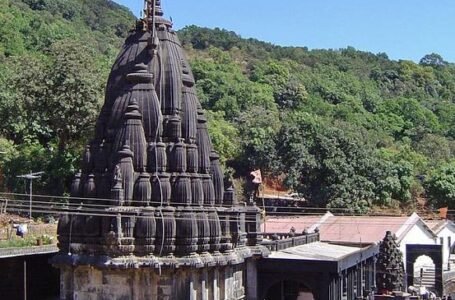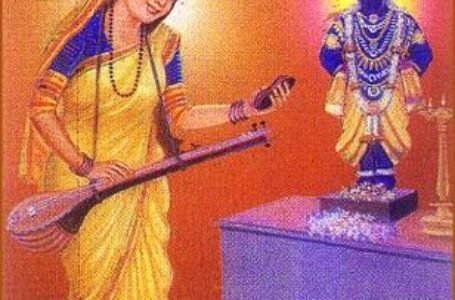Kunbi: Unearthing the clothing of Goan, Kunbi & Gowda tribes
- Lifestyle Ancient history Asian history European history Medieval history
 Khadija Khan
Khadija Khan- January 27, 2023
- 0
- 948
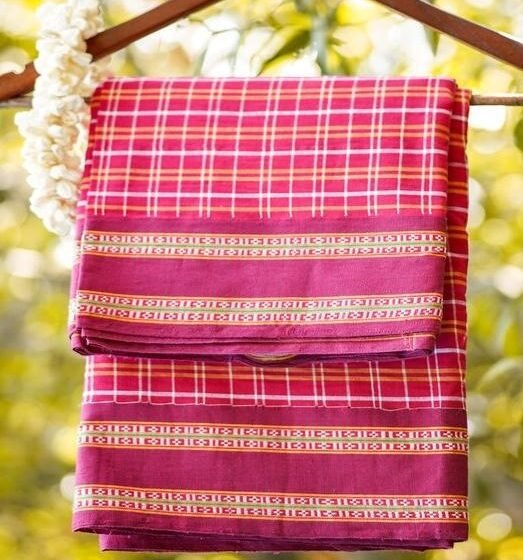
Kunbi– the withering Goan textile tradition
The thickly woven, coloured saree known as the Kunbi is well-known across the state of Goa. The earliest Goan tribes, that are, the Kunbi and Gawda tribes, are honoured by the name of the Kunbi saree.
The fabric dates back many centuries and before the Portuguese invasion. Since the Portuguese pushed the Goans to alter their garb during the colonial era, the Kunbi tribe culture—including the wearing of these sarees—disappeared. After the Portuguese left, starting in 1961, the government and the tribe themselves brought it back to life, known as the legendary Kunbi revival.

A Kunbi saree is a checkered saree of usually a red colour and its bold variations on it. The women of the Kunbis formerly worked in the paddy fields and wore their sarees such that they fell just below the knees to allow for easy mobility. The terms “kun” (people) and “bi” (seed) in Konkani, are the source of the name “Kunbi”. Thus, “Kunbi” literally refers to individuals who plant or germinate seeds. It is also thought that the skill of weaving Kunbi sarees, which has been passed down from generation to generation, is a symbol of familial bonds.
The saree witnessed alterations in terms of colour and pattern with the emergence of contemporary civilization. The Kunbi saree was originally draped loosely across the waist and worn without a blouse. The drape was wound into a narrow knot on the right shoulder. “Dethli”, which translates to “knotted,” is the name of this method of draping a saree. However, nowadays, ladies wearing kunbi can be seen sporting blouses. In addition to sarees, the chequered Kunbi weave is also used to make loincloths, handkerchiefs, gamcha (cotton towels), and other items. Unfortunately, though, the weave has declined during the previous decade and has slowly become a dying craft.
The saree’s basic colour is red, and there are checkered designs all over it. It was also handwoven by the tribe itself from 100 percent cotton. The Kunbi tribe farmed rice fields so to facilitate movement when working in the fields or even at home, the saree is often worn at least a foot above the ankle. The saree is shorter than a typical saree of 5–6 yards. As a result, it partially exposes the legs when worn. It was appropriate for working in hot weathers and on farms. From the waist up, the drape flares, enhancing comfort. Because of the firm and thick weave, it resists fading quickly. Instead of the typical left, the saree skirt’s folds extend out to the right.
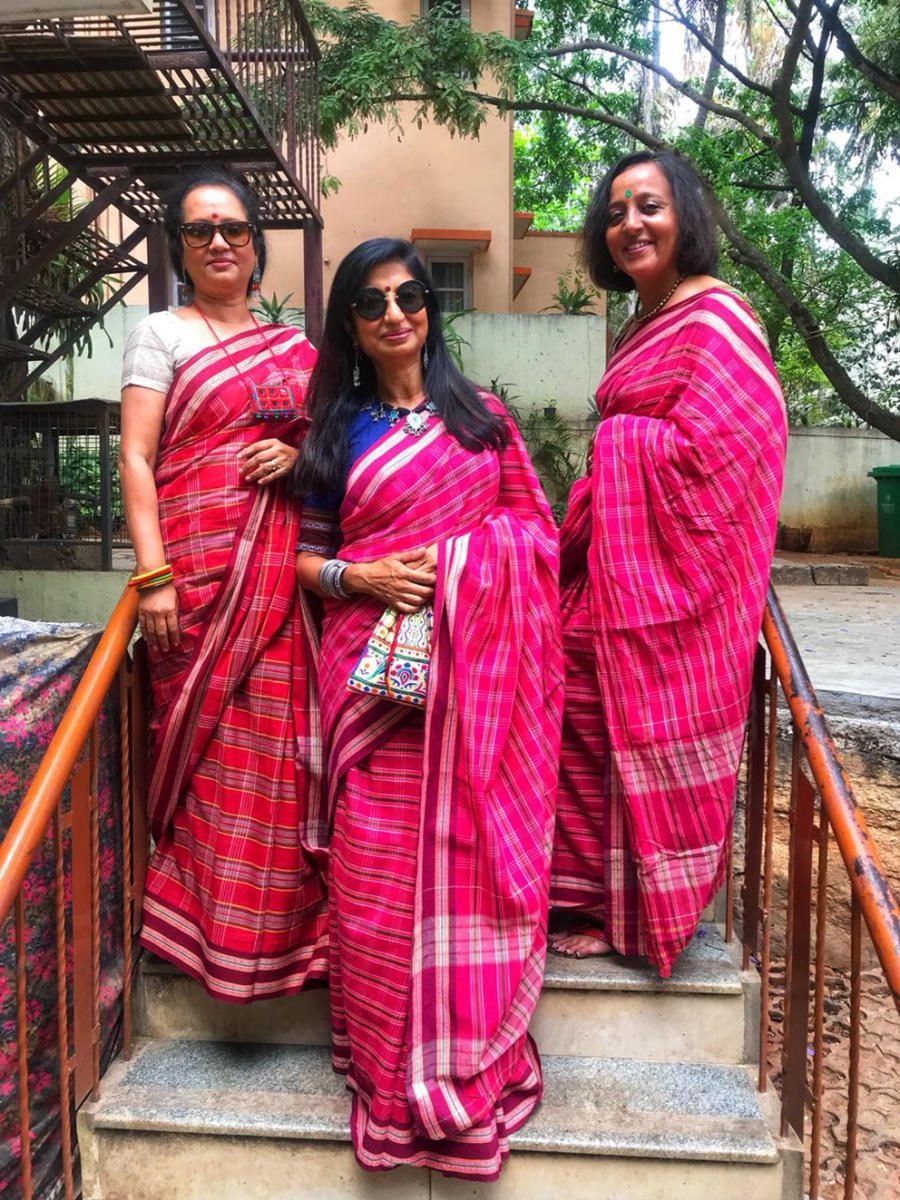
Another noteworthy aspect is that the saree’s checks are coloured in just a few colours, including Yellow (Kesari), Red (Tambdo), White (Dhavo), and Green (Hirvo). Black, purple, and maroon are also utilised in deeper hues. A real Kunbi saree uses only these colours; the rest of the palette is conventional. The colours are said to represent several life stages, including youth, marriage, old age, and death.
When it came to weddings, young widows wore blue and lilac sarees, while the elderly wore black. Young people wore scarlet and maroon sarees during festivities.
The Kunbi saree was originally woven with small and big checks and coloured in red and black, originally, without a choli and instead with a straightforward blouse with puffy sleeves. Traditional Kunbi women used to accessorise themselves with strands of black beads for their necklace and simple glass red, green, and bangles.
Since there are 156 distinct types of plants that produce dye in Goa and the surrounding areas, the dyes for these colours were obtained organically. The fabric’s pinkish-red plant dye and other colours are made in Goa using organic components like rice kanji (starch), vinegar, and iron oxide. All of which are in great abundance in Goa. Nowadays, Sawantwadi is where the dyes are purchased.
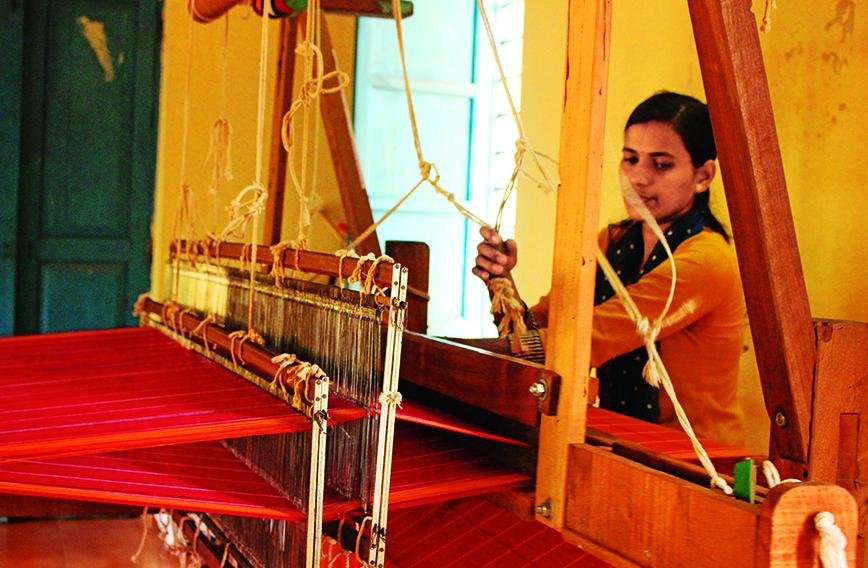
Near the end of the drape, stripes of white, green, purple, and indigo were occasionally applied. These sarees have a 2.5 to 3 inch broad dobby border with streams of white or gold colour running down the edges. The 4.5-meter-long original Kunbi sari is weaved with earthy hues to represent energy and fertility.
Remedios claims that it takes around two days to weave a single Kunbi sari for a pupil and that it often takes new students at least a month to master the fundamentals of weaving. The also say that further competence is acquired via months of practise. To encourage the skill, two-month practical schools are now available for Kunbi cloth weaving. For people without any prior weaving experience who want to learn the fundamentals of the craft, there is a one-month training programme available. Women from villages and tribes receive free of cost training.

Such training programmes of various lengths are established to maintain the lost heritage. For dancers and performers to wear in Goa during festivals and events, the majority of Kunbi cloth is now made on power looms in Maharashtra, Belgaum, and Karnataka under the name “authentic Kunbi.” Remedios state that all materials used to create the original Kunbi fabric are 100% organic and genuine, made with age-old traditional weaving techniques as opposed to what is currently sold as Kunbi. The current definition of Kunbi weave is not the original weave that the Kunbi community has used for centuries.
The late fashion designer and museum director Mr. Wendell Rodricks introduced the Kunbi Saree of Goa to the majority. In order to resurrect the nearly extinct traditional saree that was formerly worn by the Goan Kunbi ladies, Mr. Wendell Rodricks addressed Goa College of Home Science in 2009 about putting up a Handloom weaving and training Center.
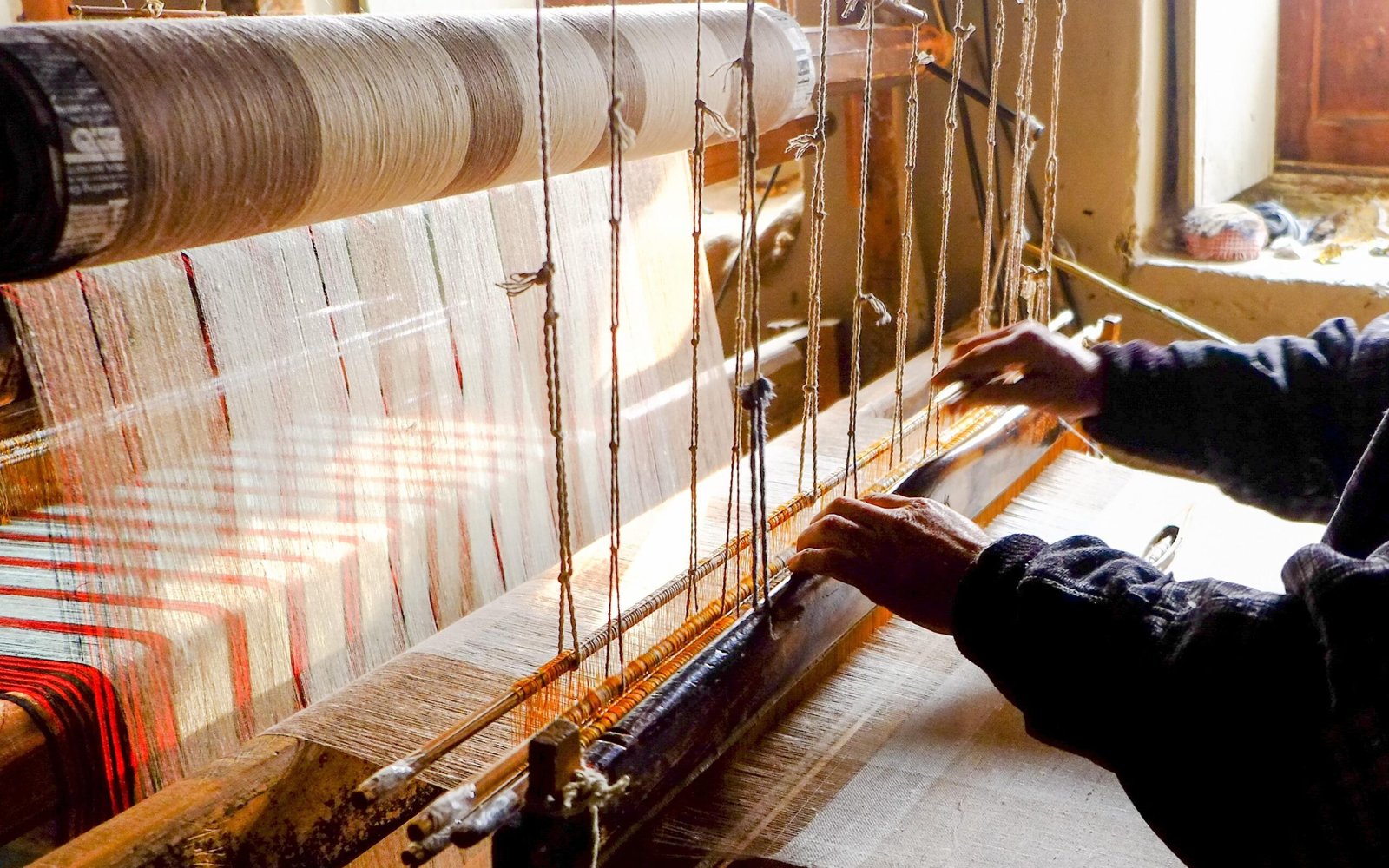
The cosy Kunbi sarees had vanished from the 19th century to the early 20th century, and even after Goa’s liberation in 1961, when it became a part of the nation, neither the government nor any NGOs stepped forward to attempt to bring the Kunbi sarees back.
The 93-year-old master weaver of Goan kunbi sarees, Ranganath Kamath, addresses his tales of creating the garments. The Portuguese used to import dye from Japan and supported weavers by providing yarn and other raw materials until the 1960s. Three large families, the Shettigars of Candolim, the Rasquinhas of Bastora, and the Kamats, controlled the trade.
“The colours changed over time. Green, blue, and maroon were present. A common sight on fields where ladies would spend the day was an indigo blue. Red, though, was the colour of the earth, the land, and life. The women never disputed about the price; they always pulled them out, chose them after giving them a good look,” says Ranganath.

Kamath recalls that in the 1960s and 1970s, a silk sari would not cost more than Rs. 200 and a cotton one would cost anywhere between Rs. 40 and Rs. 70. However, the business slowed significantly in the 1970s as a result of the establishment of government power loom units in the nearby villages.
With the development of power looms and auto looms, the handloom business has gradually perished. The cost of raw materials is high since the closest locations to get yarns from Goa are Kolhapur, Ichalkaranji, or even Coimbatore, Tamil Nadu. Handloom weaving is a family business, but younger generations are eschewing it in favour of easier and better ways to make a living. Again, hiring workers from other states raises the price.
Although this saree has traditional roots and is regarded as highly ethnic, its basic checkered weave distinguishes it as belonging to the category of geometric designs from the perspective of textile designers. In the age of modernity, this garment has lost its splendour as the majority of community members leave for brighter pastures. Members of this community choose to work in white collar or government occupations over being agricultural producers as Goa’s literacy rate has increased.

